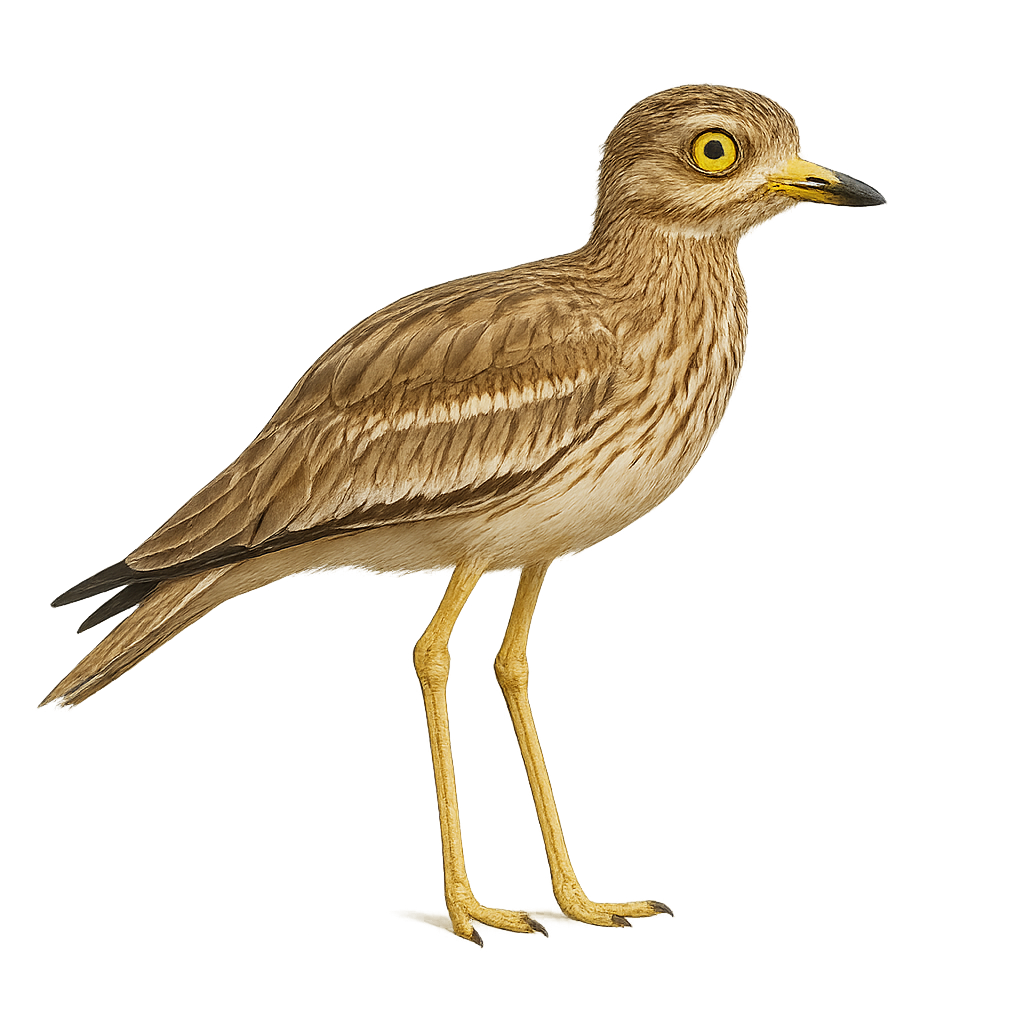Observe and photograph a species in its natural habitat
Learn where and when to observe a species in the wild, how to recognize it in the field, and what habitats it lives in. Get photography tips adapted to its behavior and capture stunning images without disturbing the animal. For full details, open the complete profile in the WildlifePhotographer app.
Eurasian Stone-curlew
Scientific name: Burhinus oedicnemus

IUCN Status: Least Concern
Family: SCOLOPACIDAE
Group: Birds
Shyness: Suspicious
Safe distance: 30 m
Breeding season / Courtship: 01.03-31.03
Gestation: 24 à 25 jours
Births: 25.04-25.05
Habitat:
Open areas, savanna, and grasslands
Description:
The Stone-curlew is a large, ground-dwelling bird primarily found in open and arid regions of Europe, the Middle East, and North Africa. It measures about 40 to 45 cm in height and weighs between 350 and 500 g. What distinguishes the Stone-curlew is its cryptic plumage, generally brown-gray in color, allowing it to blend effectively among vegetation or rocks. It has large yellow eyes and a distinctive call, which is often heard during the night, hence its name. This bird primarily feeds on insects, worms, and small invertebrates found on the ground. The Stone-curlew is mostly active at dusk and at night, feeding slowly while scanning its surroundings. While not in immediate danger, it faces threats from habitat loss, intensive agriculture, and human disturbance.
Recommended lens:
>=300 mm
Photography tips:
Approach discreetly and slowly, as the Great Stone Curlew is a rather shy bird, easily disturbed by sudden movements or a too-rapid approach.
Photograph early in the morning or late in the afternoon, when the light is softer and the bird is more active in searching for food or monitoring its territory.
Capture its natural behaviors: The Great Stone Curlew is often seen on the ground, searching for insects or other prey. Be patient and wait for it to move or rest to capture authentic moments.
Be respectful of its space: Avoid disturbing the bird when it is resting or busy foraging for food. Keep your distance and do not disturb it, especially during the breeding season.
The Great Stone Curlew is a vulnerable species due to habitat loss and human disturbances. It is essential to respect its natural environment, particularly its nesting sites, and follow local conservation rules to protect this fragile species.
Ready to take action?
Choose your platform and start your free trial today



